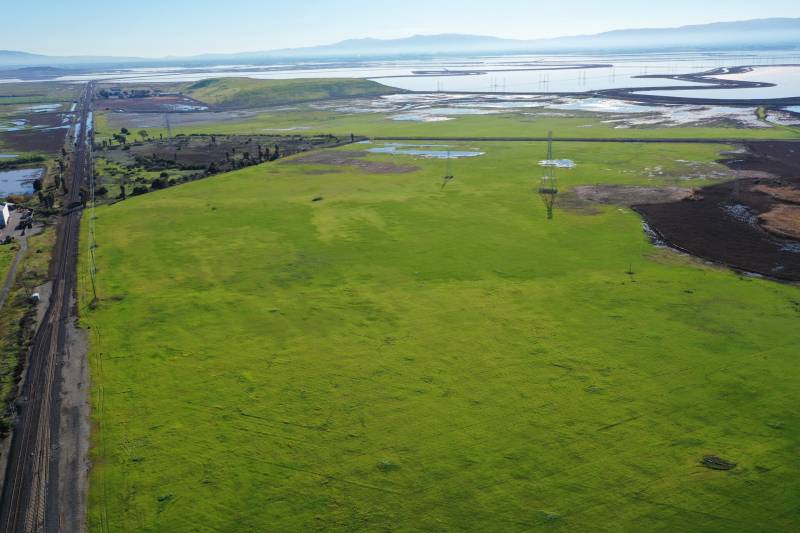But scientists have questioned whether the city should build in this upland area, where wetlands would naturally migrate as tides rise, and say it could rob the city of natural flood protections in the future. Environmentalists challenged the project with multiple lawsuits in an effort to strengthen environmental mitigations — or derail the project entirely.
“The range of projections for sea levels by that time are wide and sea levels at different ends of those projections could warrant significantly different responses,” the ruling said. “Because the City currently can only dimly guess what measures will be needed to respond to conditions several generations from now, the City was not required to analyze the impacts of the adaptive pathways as part of this project.”
The court said that “sea level rise is not an impact on the environment caused by the project,” and noted that the state’s landmark conservation law, the California Environmental Quality Act, requires strict analysis of a project’s impact on the environment, and not the environment’s impact on a project.
Jana Sokale, with The Citizens Committee to Complete the Refuge, one of the environmental groups that sued, said the decision is shortsighted and doesn’t take the threat of rising sea levels seriously. She believes building 3,000-square-foot homes in an area that climate models show could flood puts residents on the front line of climate change and leaves them on the hook for adapting.
“We can’t keep doing what we’ve been doing, and Earth is telling us that every year in big ways — and we just are not listening,” she said.
Newark residents like Sokale say the decision to continue with a community on one of the last Bay Area wetlands — sponges that soak up floodwaters — shows that local, regional and state agencies aren’t taking climate change as the crisis it is.
“Laws and regulations around the bay and within California are inadequate to protect these lands in the face of climate change,” she said. “The laws have not grasped what is ahead for us.”
The Sobrato Organization did not respond to KQED’s request for comment. Newark officials were not immediately available.
The next step: permitting
To avoid some state regulations, the developer positioned Sanctuary West out of the purview of the Bay Conservation and Development Commission, or BCDC: 100 feet from the shoreline.
“The developer looked at BCDC and said, ‘I’m going to move the project out of your jurisdiction.’ There’s nothing that [we] can do with regard to that development project,” said Larry Goldzband, executive director of BCDC.
Officials at The San Francisco Bay Regional Water Quality Control Board say they intend to make it difficult for developers to build along Newark’s wetlands. Last winter, the board received nearly 5,000 petitions from residents who urged them to challenge the project. Environmental groups are still calling for the permanent protection and restoration of both the wetland and upland areas.
In a letter to the developer dated May 2020, the board said the group’s plan to raise the potential homes out of the floodplain with more than a million cubic yards of dirt will “alter the existing wetland hydrology” and that the housing would disrupt endangered species, recreation and wildlife habitat.
In an interview with KQED, Xavier Fernandez, planning manager for the board, said The Sobrato Organization should expect permitting to be very expensive. He says the board would like to push the project further into the existing city footprint or have the developer “not build it at all.”
Despite the agency official’s vocal concerns, because of their limited jurisdiction they can’t outright reject the project.
BCDC outlined a potential fix to the regulatory loophole in a new regional sea level rise adaptation plan, Bay Adapt. The plan would require broad regional cooperation.
The agency says there are opportunities for new policies that better interpret the future effects of climate change and rising seas. One option: expanding BCDC’s jurisdiction beyond 100 feet from the shoreline.
But that would require a change to the agency’s jurisdiction, which would take years and require conversations with all the agencies, cities, counties and people involved.
